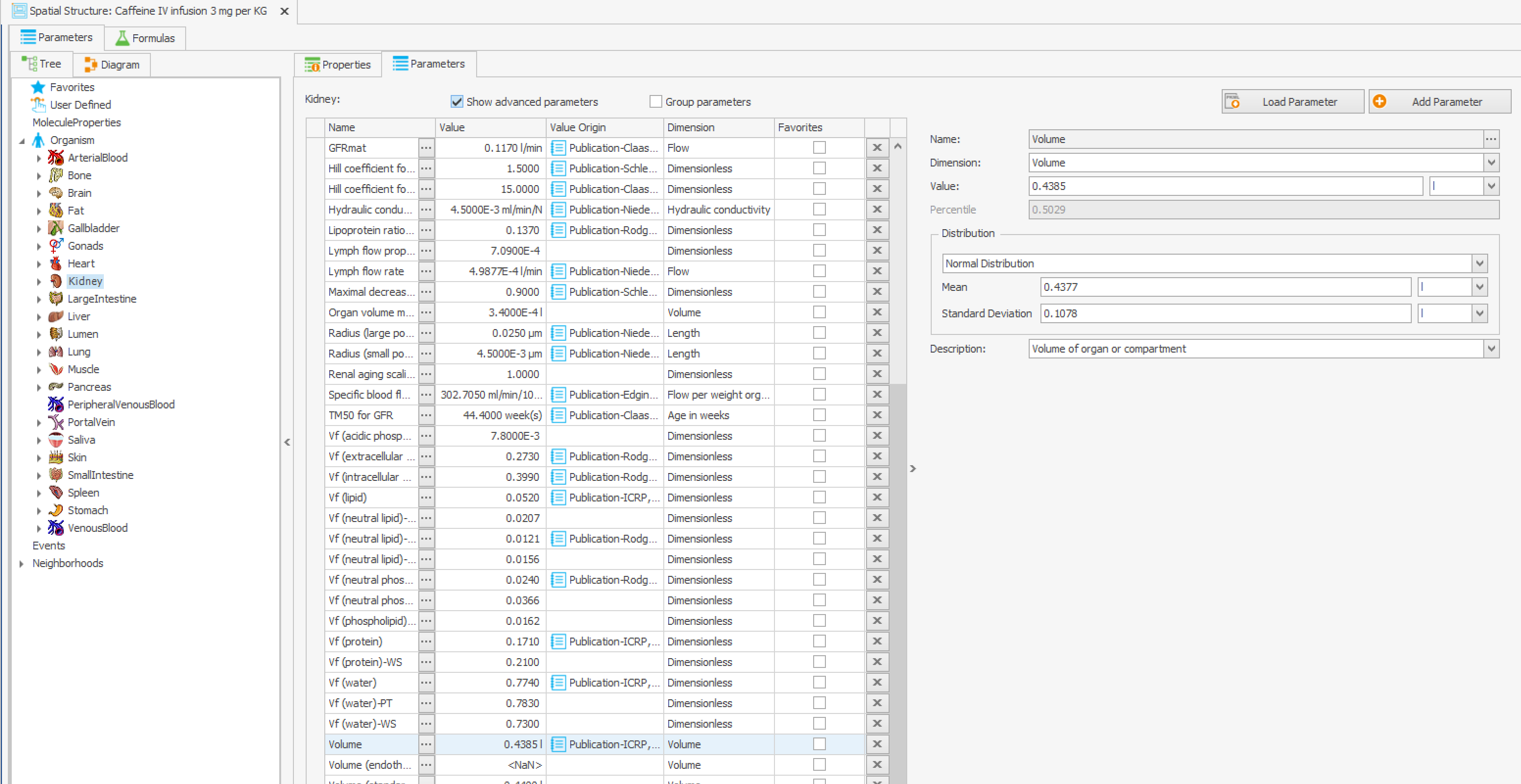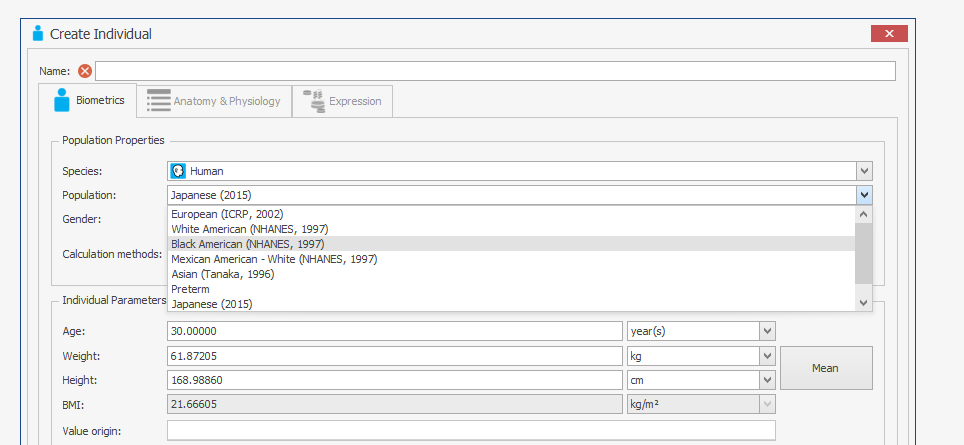Hello Jesminna,
you can see all the equations if you export the model to MoBi:

There you will find a tree of the whole organism in the Spatial Stuctures Building Block, where you can see how the parameters are defined.

The volume of the kidney is a distributed parameter with a mean value and standard deviation. For a mean individual, the volume is taken from the PK-Sim database according to the anthropomentry you selected for the indiidual.




Hello,
Based on the information in the literature (https://www.ncbi.nlm.nih.gov/pubmed/26323410), it looks like the attached equation is used in PKSim for GFR calculation. Is there any equation used in PKSim for kidney volume calculation? If yes, could you share the equation?
Thanks!
Jesminna